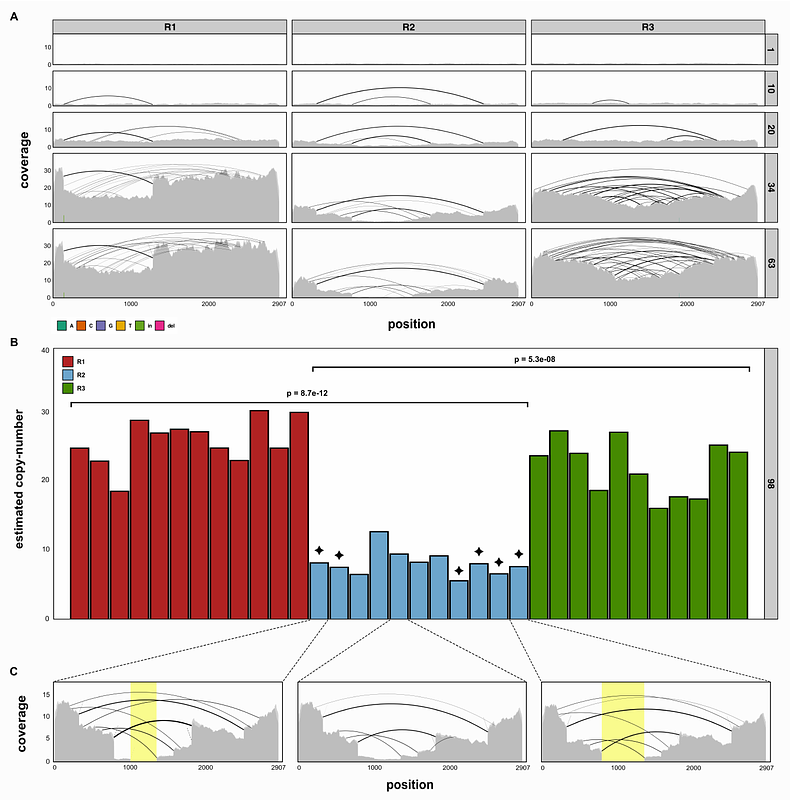Rapid emergence of hyperparasitic elements may stop P-element invasions in the absence of a piRNA-based host defence

Rapid emergence of hyperparasitic elements may stop P-element invasions in the absence of a piRNA-based host defence
Beaumont, M.; Selvaraju, D.; Pianezza, R.; Kofler, R.
AbstractTransposable element (TE) invasions pose risks to both the TE and the host. All copies of a TE may be lost via genetic drift, or host populations may suffer fitness declines, potentially leading to extinction. By monitoring invasions of the P-element in experimental Drosophila melanogaster populations for over 100 generations, we uncovered a novel risk for invading TEs. In two replicate populations, the P-element rapidly multiplied until a piRNA-based host defence emerged, leading to the plateauing of TE copy numbers. However, in one population (R2), P-element copy numbers stabilised at a significantly lower level, despite the absence of a piRNA-based host defence. We find that this stabilisation was likely driven by the propagation of non-autonomous insertions, characterised by internal-deletions, which out-competed the autonomous full-length insertions. Such a rapid proliferation of non-autonomous insertions could account for the high prevalence of P-element insertions with internal-deletions observed in natural \\dmel populations. Our work reveals that TEs may stochastically sabotage their own spread in populations due to the emergence of hyperparasites, rendering the establishment of a host defence unnecessary. The proliferation of hyperparasitic elements may also lead into an evolutionary dead end, where affected populations are resistant to re-invasion (e.g. following recurrent horizontal transfer), yet are unable to infect other species due to a lack of autonomous insertions.